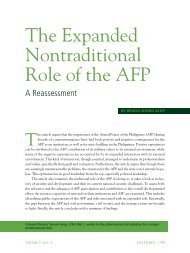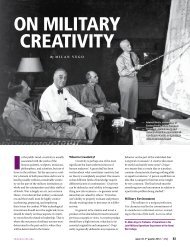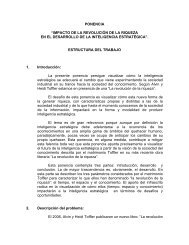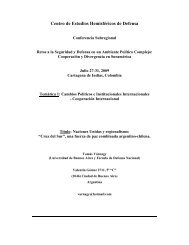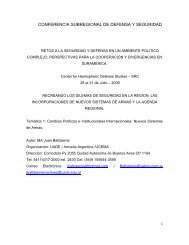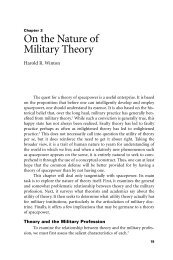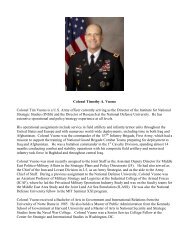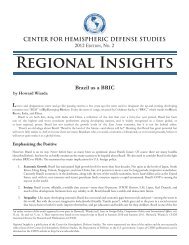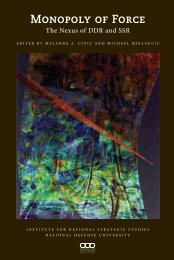In the second half of the 20th century, the US enjoyed pre-eminence ...
In the second half of the 20th century, the US enjoyed pre-eminence ...
In the second half of the 20th century, the US enjoyed pre-eminence ...
Create successful ePaper yourself
Turn your PDF publications into a flip-book with our unique Google optimized e-Paper software.
Fraction<br />
0.3<br />
0.25<br />
0.2<br />
0.15<br />
0.1<br />
0.05<br />
0<br />
2000 2005 2010 2015 2020 2025 2030 2035 2040 2045 2050 2055<br />
Year<br />
<strong>US</strong><br />
Canada<br />
UK<br />
Australia<br />
Japan<br />
France<br />
Germany<br />
Italy<br />
Spain<br />
Korea<br />
Russia<br />
Mexico<br />
Brazil<br />
Turkey<br />
China<br />
<strong>In</strong>donesia<br />
<strong>In</strong>dia<br />
Figure 5. Estimated Fraction <strong>of</strong> World Research Publications for 17 Economies Over <strong>the</strong><br />
Period 2005–2050<br />
According to <strong>the</strong> <strong>pre</strong>dictions shown in Figure 5, by 2050 three economies (China, <strong>In</strong>dia, and <strong>the</strong><br />
United States) will account for about two-thirds <strong>of</strong> <strong>the</strong> world’s research output.<br />
As noted above, Figure 5 results from an empirical relationship between an economy’s GDP per<br />
capita and its scientific productivity and is based on a particular economic analysis. Its utility<br />
derives from <strong>the</strong> trends and timescales that it identifies ra<strong>the</strong>r than from <strong>the</strong> details for any<br />
particular year. It is <strong>the</strong> trends and timescales that are helpful in quantifying <strong>the</strong> changes facing<br />
<strong>the</strong> United States. Figure 5 suggests that <strong>the</strong> U.S. share <strong>of</strong> world S&T knowledge production will<br />
decline from about 26 percent in 2005 to 18 percent in 2050. This decline, while problematic, is<br />
not unmanageable. At least through 2050, <strong>the</strong> United States will remain one <strong>of</strong> <strong>the</strong> world’s most<br />
significant contributors to scientific knowledge. As a result, <strong>the</strong> U.S. S&T workforce should be<br />
large enough, relative to <strong>the</strong> world S&T workforce, to remain cognizant <strong>of</strong> S&T developments<br />
around <strong>the</strong> world. This ability to remain cognizant is important because, by 2050, countries o<strong>the</strong>r<br />
than <strong>the</strong> United States will produce most scientific knowledge. Maintaining an authoritative<br />
awareness <strong>of</strong> S&T around <strong>the</strong> world will be essential if <strong>the</strong> United States is to remain<br />
economically and militarily competitive. This awareness is possible only if <strong>the</strong> U.S. S&T<br />
workforce is a participant in <strong>the</strong> global S&T community. This is true for <strong>the</strong> DOD S&T<br />
workforce as well. <strong>In</strong> this regard, <strong>the</strong> DOD workforce will face several issues. Before getting into<br />
<strong>the</strong>se issues, it is helpful to review <strong>the</strong> purpose <strong>of</strong> and priorities for DOD S&T.<br />
11



